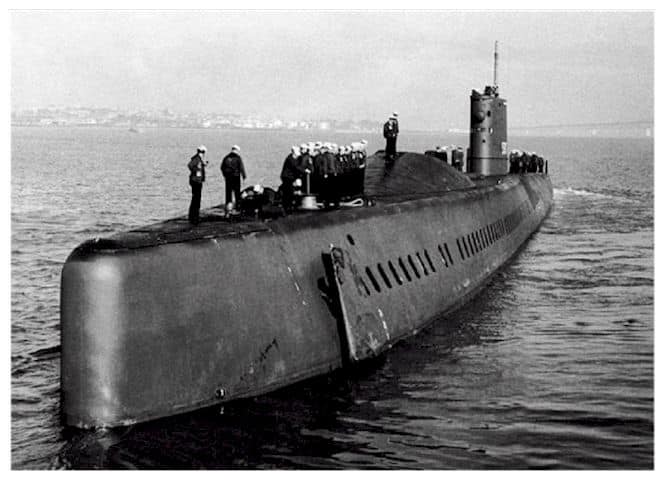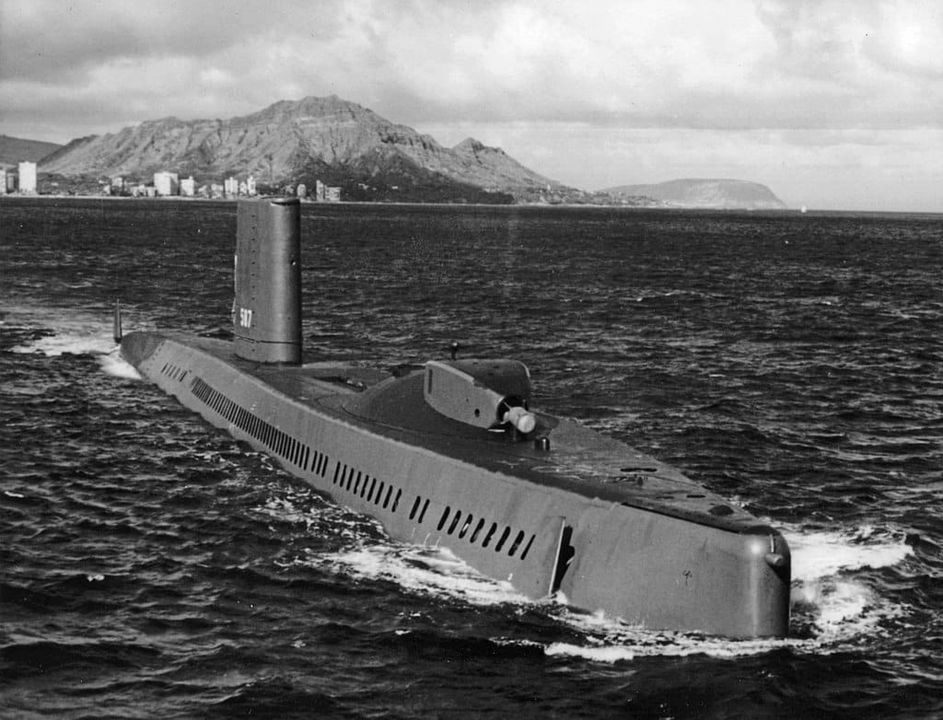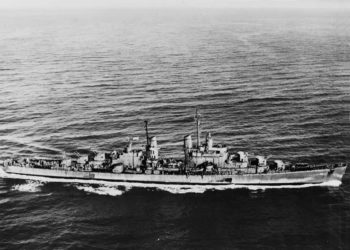U.S.S. Halibut (SSGN-587): The First Spy Submarine

Launched in 1960, the USS Halibut originally started off as a special diesel-electric submarine but was later fitted with a nuclear reactor during her construction. When commissioned, she was one of the first submarines to be built with the ability to launch some of the first cruise missiles operated by the United States Navy. She was armed with 5 x Regulus missiles and 6 x 21 inch torpedo tubes.
Now, this was before submarines were able to fire missiles while submerged, so Halibut had a special hangar that carried her payload of missiles and would have to surface to fire them. But eventually, she was surpassed by the newer George Washington-class Ballistic Missile Submarines, which could fire the new Polaris Missile while still submerged. The Halibut was then reconfigured into an Attack Submarine. Or at least, that was the official story.

The Conversion to a Special Operations Submarine
Around the same time the George Washington-class submarines were entering service, a Soviet submarine had “gone missing” while on patrol. While the Soviet Navy was unable to locate it, the U.S. Navy knew where to look and needed a “special” submarine to locate the wreck. Thus, the U.S.S. Halibut (SSN-587) was selected for conversion into a “Special Operations Submarine.”
The hangar, which was originally used to store missiles, was converted to carry an advanced ROV that would locate and photograph the wreck. In 1968, Halibut was deployed on what would be known as “Operation Sand Dollar,” where she successfully located and photographed the wreck of the Soviet Submarine K-129, an operation that would later result in Project Azorian.

Other Covert Missions
Though one of her more notable missions, it was not the only covert mission she undertook during her life. She also took part in the tapping of Soviet underwater cables as part of Operation Ivy Bells alongside USS Parche (SSN-683), USS Richard B. Russell (SSN-687), and USS Seawolf.
By 1976, the Parche had more or less taken over from the older Halibut, and she was decommissioned that same year, ultimately being sent to the breakers in 1994. ~NC









